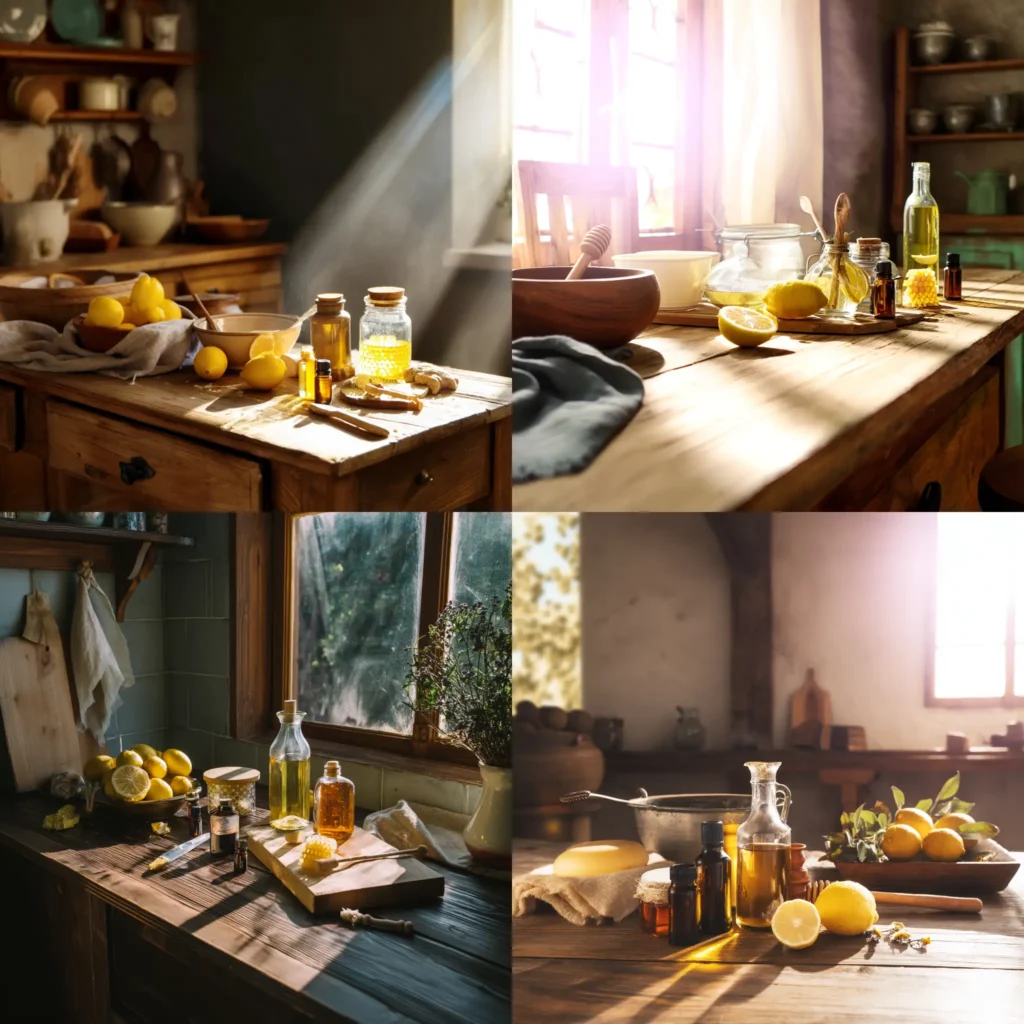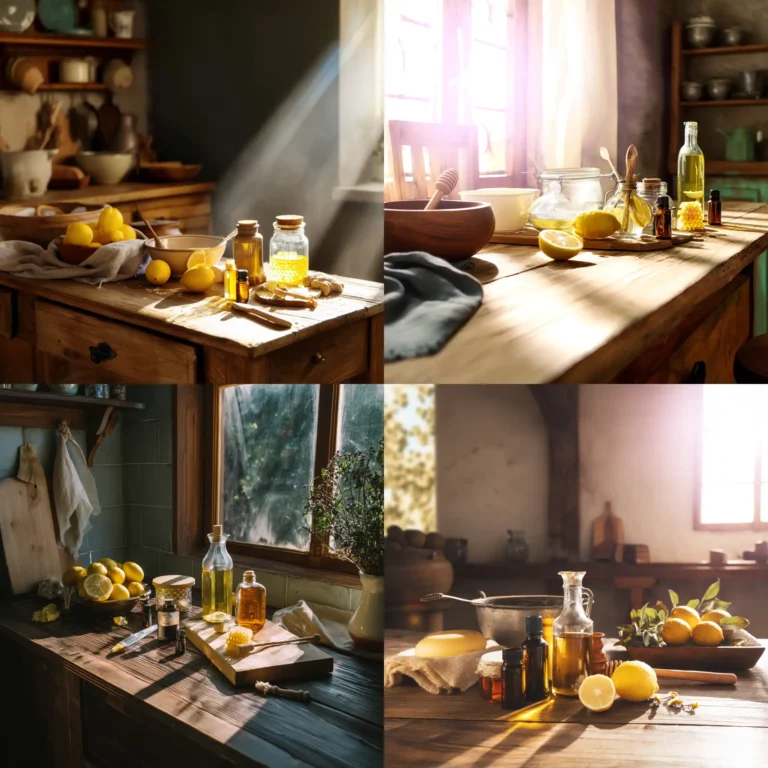Creating your own furniture polish DIY homemade is not only a smart way to save money, but it’s also safer for your family, pets, and the environment. Store-bought polishes often contain harsh chemicals that can damage your furniture over time and release toxic fumes into your home.
Table of Contents
If you’re into natural living, DIY cleaning, or simply love keeping your space fresh and healthy, this guide is for you. Let’s explore 6 amazing, all-natural recipes and methods that will leave your wood furniture gleaming and well-nourished.

Queen Size 4 Piece Sheet Set - Comfy Breathable & Cooling Bed Sheets Set - Hotel Luxury Bedding for Women, Men, Kids, Teens, Boys & Girls
🛒 Buy on Amazon1. Classic Olive Oil & Lemon Juice Polish
This is one of the most popular furniture polish DIY homemade recipes. Olive oil nourishes the wood, while lemon juice cuts through grime and leaves a fresh scent.
Ingredients:
- ½ cup olive oil
- ¼ cup fresh lemon juice
Mix the ingredients and pour into a spray bottle. Shake well before each use and apply with a soft cloth. Avoid soaking the wood—just a light polish will do.
2. Beeswax & Coconut Oil Balm
Perfect for reviving dull furniture. This balm works well on antique or deeply scratched wood. Beeswax provides a protective layer, and coconut oil adds shine and moisture.
Ingredients:
- 2 tablespoons grated beeswax
- 6 tablespoons coconut oil
Melt both in a double boiler and pour into a small container. Let it cool, then rub it into the wood using circular motions.
3. Vinegar & Olive Oil Mix for Deep Cleaning
This one acts as both a cleaner and a polish—ideal if your furniture has accumulated dust or greasy spots.
Ingredients:
- ¼ cup white vinegar
- ½ cup olive oil
- Optional: a few drops of essential oil (like lavender or orange)
Apply to a microfiber cloth and wipe in the direction of the wood grain.
4. Essential Oil-Infused Polish Spray
For a calming vibe and pleasant scent, add essential oils to your polish. Lavender, tea tree, or lemon are great options.
Ingredients:
- ½ cup olive oil
- ¼ cup distilled white vinegar
- 10–15 drops essential oil of choice
Shake well and use as a spray polish for a light, refreshing shine.
5. Walnut Scratch Fix
This trick is as old as time. Rub a raw walnut kernel directly on small scratches and scuffs. The natural oils fill in the gaps and make imperfections less visible.
It’s a perfect spot-treatment tool to keep your wooden furniture looking polished between full polishes.
6. Furniture Polish DIY Homemade Paste for Heavy Use
If you want something more durable for frequently used surfaces like dining tables, try this paste:
Ingredients:
- 2 tablespoons carnauba wax
- 4 tablespoons jojoba oil
- Optional: a few drops of cedarwood or lemon essential oil
Melt the wax and oil together, pour into a tin, and let it set. Use a soft cloth to buff it in and reveal an impressive shine.

Why Use DIY Furniture Polish?
Making furniture polish DIY homemade helps you:
- Avoid harmful chemicals
- Save money
- Customize scents and consistency
- Preserve the integrity of your wooden furniture
Plus, you likely already have most of the ingredients in your pantry.
Bonus Tips for Best Results
- Always test your polish on a small hidden area first
- Use a soft cloth—microfiber is ideal
- Avoid over-polishing; too much oil can make surfaces greasy
- Store your DIY polish in a cool, dark place
More DIY Decor Hacks You’ll Love
Looking for more ways to freshen up your home on a budget? Don’t miss our collection of DIY Budget-Friendly Decor ideas—perfect for upgrading any space without spending big.
Recommended External Read
Want expert advice on keeping wood furniture in top shape? Check out this article from The Spruce on the best practices and natural polish options. (DoFollow link)
FAQs: Furniture Polish DIY Homemade
Q1: How long can I store homemade furniture polish?
A1: Most oil-based polishes last about 1–3 months. Store in a cool, dark place. If it smells off, toss it.
Q2: Is vinegar safe on all types of wood?
A2: No. Avoid vinegar on unfinished or waxed wood. Always test first.
Q3: Can I add fragrance to my polish?
A3: Yes! Essential oils like lavender, orange, or tea tree add great scents and even have antibacterial benefits.
Q4: What’s the best cloth for applying polish?
A4: Microfiber or lint-free cotton cloths are ideal for even application.
Q5: Can I use these polishes on painted furniture?
A5: Use caution. Some oils or vinegar-based mixes can damage paint. Test first or use polish made for painted surfaces.
Q6: How often should I polish my furniture?
A6: Every 1–2 months is usually sufficient, but adjust based on your furniture’s condition and usage.
Final Thoughts
Using furniture polish DIY homemade solutions brings natural beauty back to your wood furniture while protecting your health and the environment. These 6 methods are safe, effective, and easy to make—perfect for anyone looking to live more sustainably without sacrificing style.

